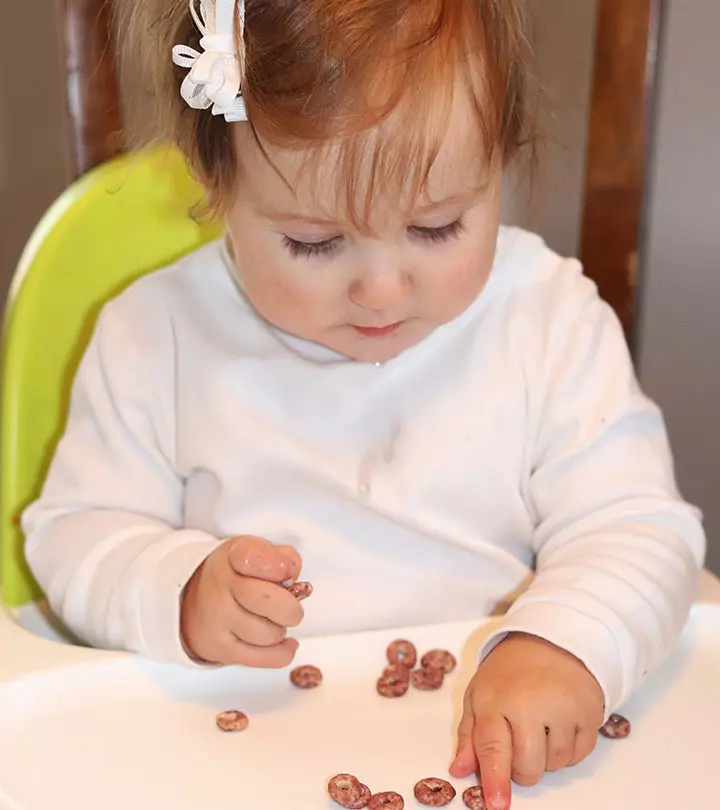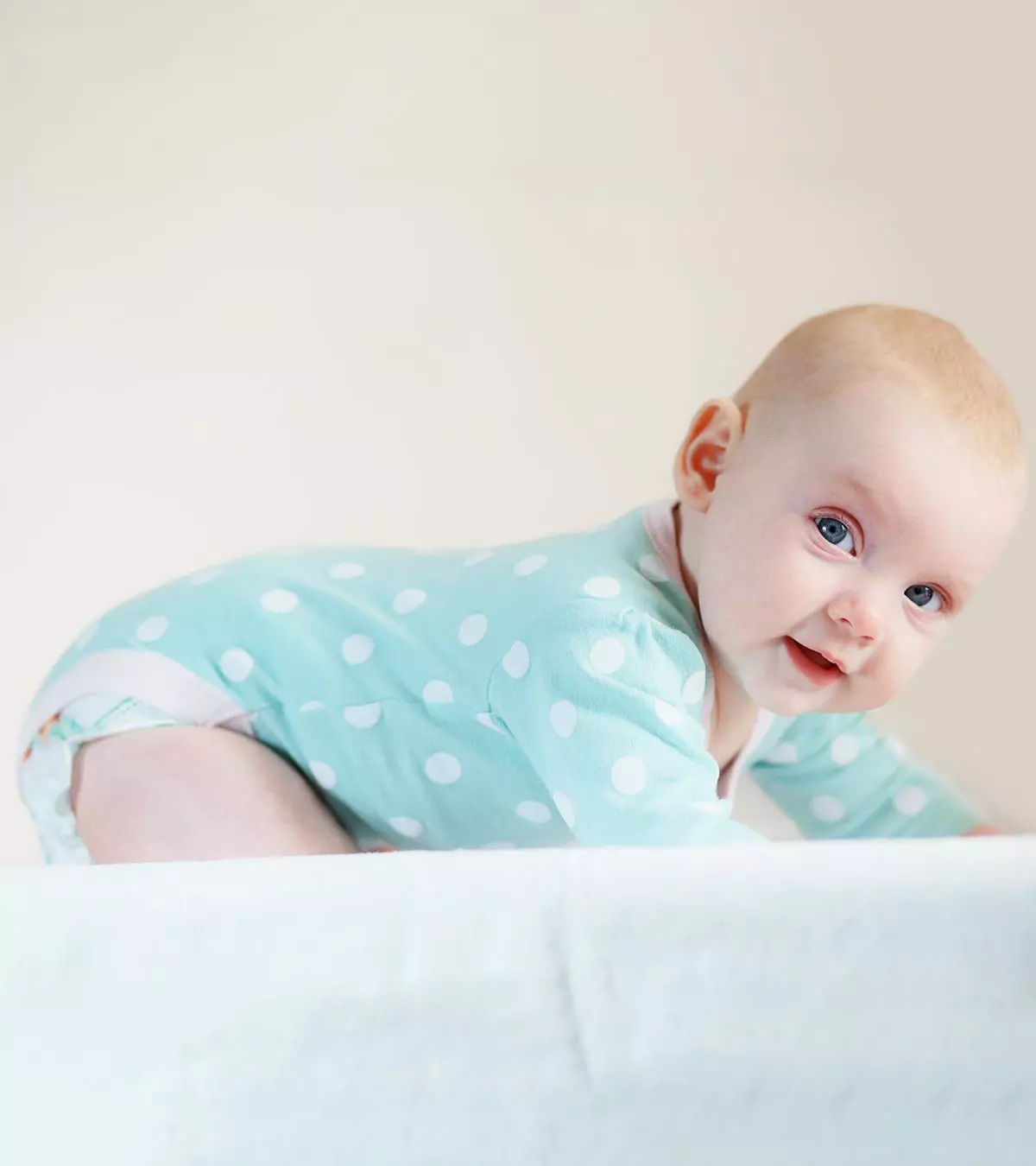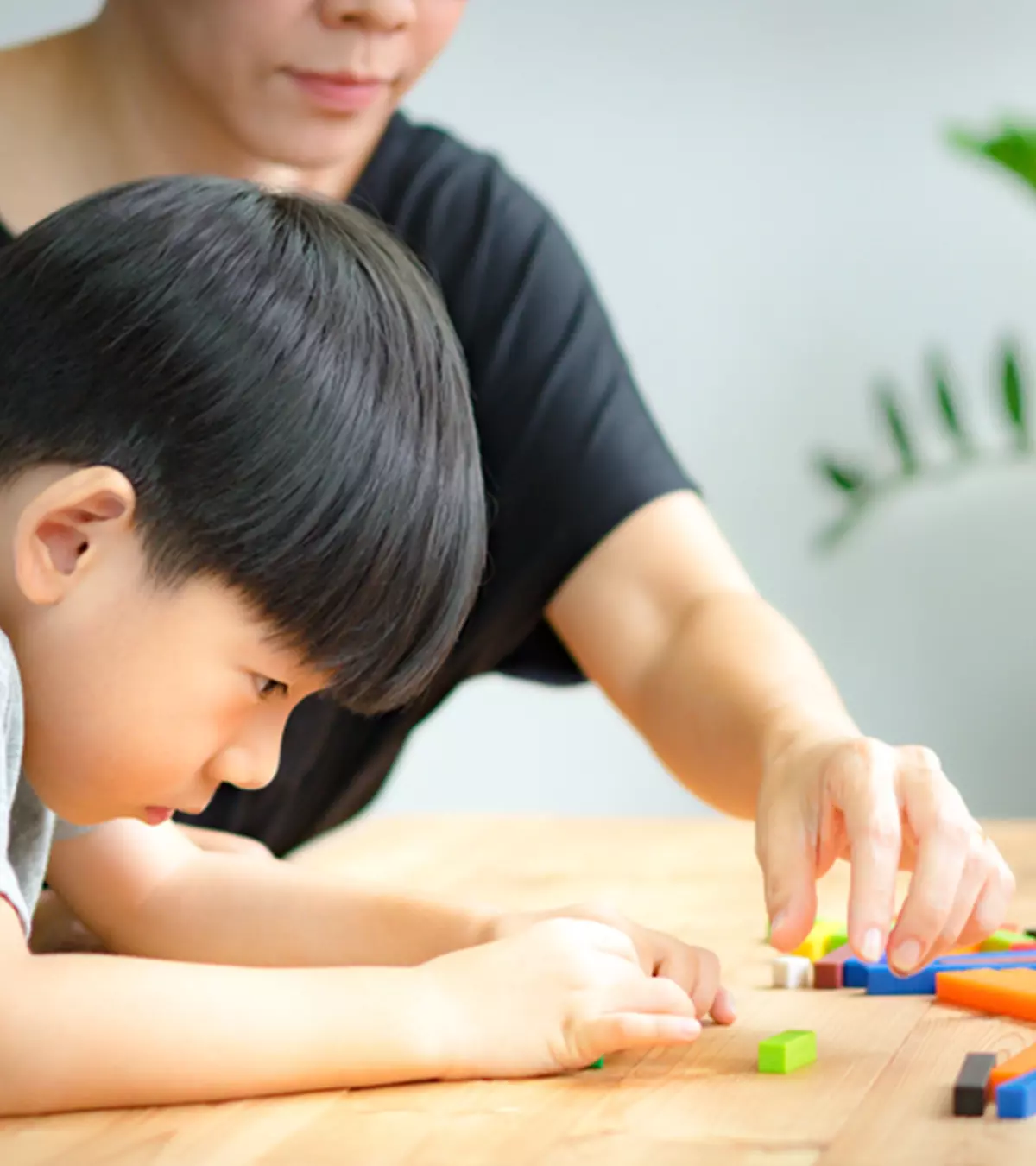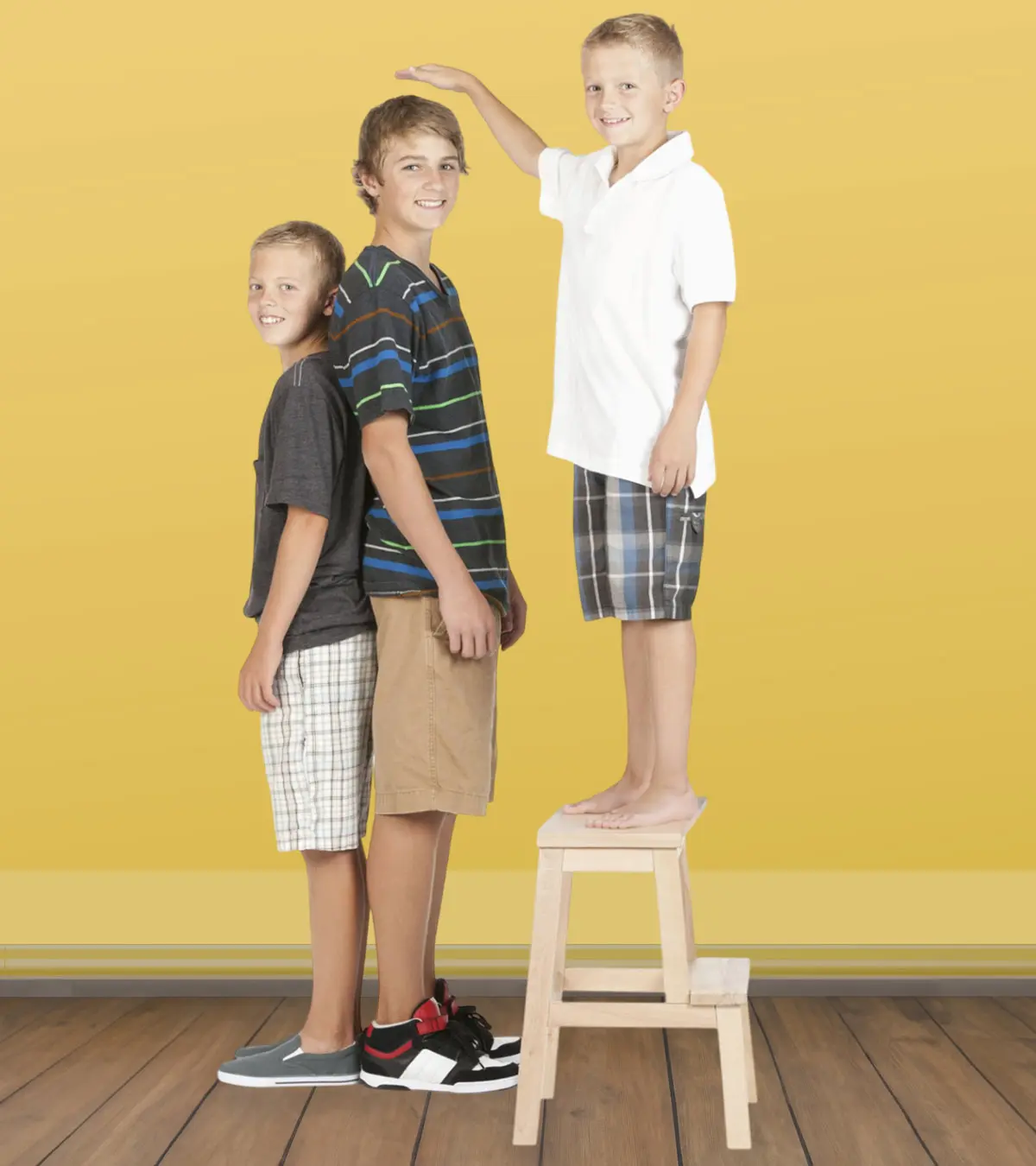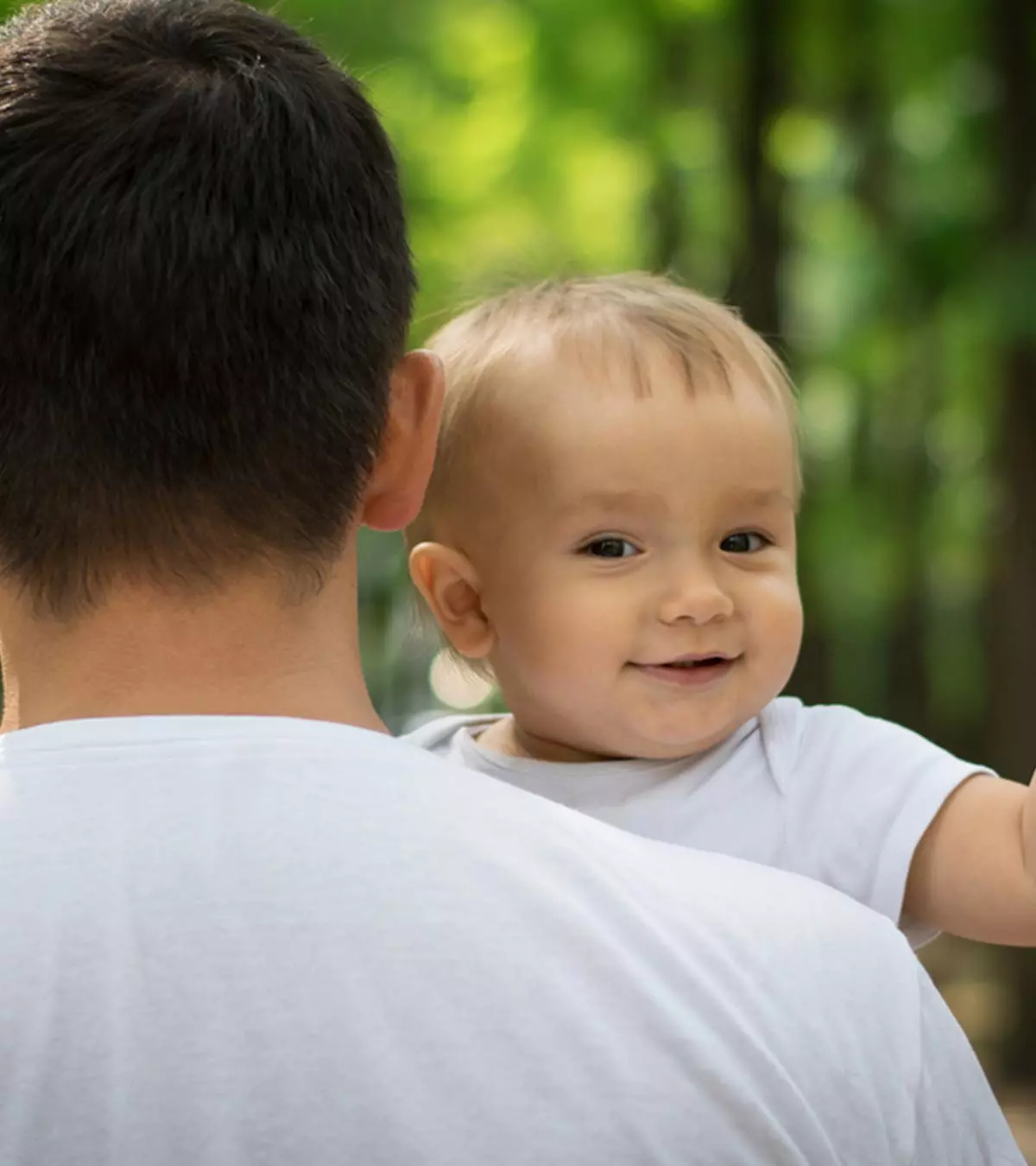
Image: Shutterstock
Babies have a heart-melting way of communicating. Their non-verbal communication involves a lot of hand-waving and is generally one of the first ways they engage in social interaction before developing speech skills. Are you curious to know when do babies wave? This post will answer your question.

Waving is one of those non-verbal gestures that determine the baby’s steady and healthy growth, indicating that they are growing towards the required developmental milestone. As parents, you can contribute to this motor development and help them in simple ways.
Read on to know about the signs of waving, along with ways to encourage it and when you should be concerned.
Key Pointers
- Babies usually start waving around 10 months of age.
- When they point their fingers towards something, copy movements, or put things in their mouth, you can understand they are ready to wave.
- Use words such as hi or bye each time you wave and help them learn the concept.
- If your baby has not started waving after 15 months of age, you may consult a pediatrician.
When Do Babies Wave?

The first wave movement among full-term infants is often observed around the age of ten months (1). Babies usually learn to copy gestures at the age of nine months, thus, some nine-month-olds may start waving back if you wave at them (2).
Babies may not understand the purpose of waving and its associated meanings until they are 12 months old. It is mostly after the first birthday a baby may wave with the intent of greeting someone with “hello” or “goodbye” (3). The toddler will gradually hone the skill as they grow older, making their waves smoother and purposeful.
Signs That A Baby Is Ready To Wave

A baby who is ready to wave may show various fine motor movementsiAbilities where one needs to use the small muscles in their hands, fingers, and wrists to perform specific movements. of the hands and fingers. You may also notice certain cognitive milestonesiIndicators of a baby’s mental development, including their ability to think, explore, learn, and decipher things. . Most of these achievements occur at the age of nine months and are stated below (4).
- Points at things with their fingers
- Copies hand movements and gestures
- Moves objects from one hand to another
- Picks objects with index finger and thumb (pincer grasp)
- Put things to mouth
- Understands “no” and may understand other single-word instructions
 Quick fact
Quick factSome nine-month-olds may also pull to stand, that is, hold an object and pull themselves into a standing position. This milestone indicates better wrist strength, control, and dexterity, which are usually needed to wave.
How And When To Encourage Waving?

In the beginning, your baby may wave at anything or anyone. The key to helping them associate the action to a word or intent is practice. Therefore, say words such as “hi,” “hello,” “bye,” or “bye-bye” each time you wave to your baby. Your baby will gradually start to use waving as a non-verbal communication gesture.
You may also consider rhymes or songs to make waving memorable. For instance, sing the first verse of the rhyme “My Hands Wave Hello” to make learning fun. Below is the first verse of the rhyme.
My hands wave hello,
My hands wave hello,
Every time I see my friends,
My hands wave hello.
You may replace the word “hello” with “bye-bye” and the word “friend” with a person-specific call or another noun. This activity may also help the baby associate new words with people and objects.
 Quick tip
Quick tipWhat If Your Baby Doesn’t Wave?
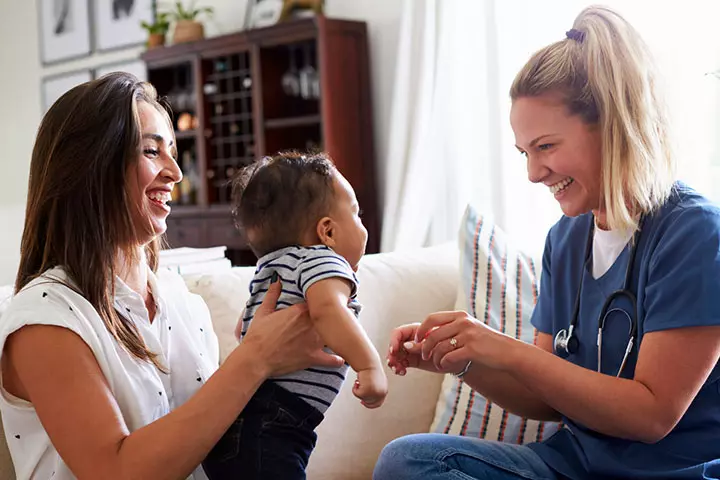
If your baby is younger than 12 months, wait until their first birthday. Most infants learn to wave by their first birthday when they step into toddlerhood. Each child is different and may achieve developmental milestones at a slightly different age than their peers. Therefore, give your toddler a month or two if they do not wave even after their first birthday.
You may consider speaking to a pediatrician if your toddler does not wave even after attaining the age of 15 months (5). Most babies and toddlers who display poor achievement of developmental milestones also display other signs of possible developmental disorders. You may stay alert to the following developmental delaysiA delay in the typical physical, emotional, or mental growth and development of a child. at different ages (6).
- Does not bring hands to mouth by two months
- Does not hold the head steady by four months
- Does not reach out to objects by six months
- Has trouble bringing objects to mouth by six months
- Does not roll over at least in one direction by six months
- Does not sit with help by nine months
- Has trouble holding objects or passing them from one hand to another by nine months
- Does not copy any gesture by 12 months
What Other Milestones Will Your Baby Meet?
Here are a few notable developmental milestones a baby usually reaches by the time they learn to wave at nine to ten months of age (1).
- Uses pincer grasp to hold small objects
- Picks toys or other objects from the floor
- Tries self-feed small pieces of food items (Self-feeding)
- Holds a bottle or cup in the hands
- Hits objects held in hands together
- Copies gestures, such as clapping
- Gets into a sitting position and sits without help
- Crawls and pulls to stand
What Comes After Waving?

Most babies become good at waving by their first birthday. You may look forward to the following notable developmental milestones from 12 to 24 months (6).
- Walks while holding objects (Cruising)
- May take a few steps without support
- Stands without support
- Follows simple instructions
- Understands requests
- Uses specific gestures to communicate, such as shaking head to say “no”
- Walks up and down the stairs
- Uses spoon to self-feed
- Drinks from an open cup
- May undress a few pieces of clothing
- Shows more specific and purposeful gestures
- Develops adequate hand dexterity to draw lines and simple shapes
Frequently Asked Questions
1. Is waving a learned behavior?
Babies typically start waving between 9-12 months of age and learn to wave through observation and imitation of others around them. They may wave to say hi or just when they are curious. They also develop the physical ability to wave through practice and repetition. Waving is a form of nonverbal communication and is an important milestone in a baby’s development, helping to build social and emotional skills (7).
2. Do some babies skip clapping?
Some babies may skip clapping as a developmental milestone. Clapping usually develops between 9-12 months of age, but some babies may not learn to clap until later or may not be interested in clapping. Every baby develops at their own pace and may skip certain milestones or develop others earlier or later. Skipping clapping is not a cause for concern unless other developmental delays or concerns accompany it.
3. What are some other ways babies communicate before they start waving?
Babies communicate in multiple ways before they learn to wave. For example, they express themselves through crying, facial expressions like smiling, body movements such as kicking and reaching, and gestures like pointing or grabbing. Baby cooing and baby babbling are also signs of communication.These non-verbal signals allow them to convey their needs, emotions, and interact with their caregivers (7).
4. What are some common mistakes parents make when teaching their baby to wave?
Parents often make mistakes when teaching their baby to wave, such as being impatient and expecting instant success. In addition, insufficient encouragement and reinforcement, failure to demonstrate the behavior, and inconsistent practice are common errors.
5. Do autistic babies wave or clap?
The waving or clapping behaviors of autistic babies can vary due to differences in their social communication and interaction skills. While some autistic babies may still wave or clap, others may not engage in these gestures as often or similarly to typically developing babies (8).
Having a baby can make you curious about their developmental milestones, so you may wonder when babies start waving at people. This cute gesture with their tiny hands signifies that your baby is growing healthily, both physically and cognitively. So keep track of the various body movements and gestures they start displaying at different ages. Do not worry if such developments are slightly delayed, but try engaging them in activities that can aid these developments. However, if you notice a drastic deviation from the general timeline, consult your pediatrician to rule out any underlying issues and for prompt management.
Infographic: Additional Methods To Encourage Baby Waving
Witnessing a baby wave at you is not just one of many adorable gestures but a milestone that most babies attain during their first year. Read through this infographic to learn how you may encourage your baby’s waving movements with simple tips, joyful songs, and actions.
Some thing wrong with infographic shortcode. please verify shortcode syntax
Illustration: When Do Babies Wave? Age Signs And When To Worry

Image: Stable Diffusion/MomJunction Design Team
References
1. Developmental milestones; University of Washington
2. Important Milestones: Your Baby By Nine Months; CDC
3. Developmental milestones record – 12 months; U.S. National Library of Medicine
4. Your baby’s developmental milestones at 9 months; UNICEF
5. 15-18 months: toddler development; Raising Children Network (Australia)
6. Milestone Moments; CDC
7. Communication and talking: what to expect in the early years; Raising Children Network Australia
8. Autism: early signs in young children; Raising Children Network Australia
9. Infant – newborn development; National Library of Medicine
10. Parenting tips for the first two years of life; UNICEF
Community Experiences
Join the conversation and become a part of our nurturing community! Share your stories, experiences, and insights to connect with fellow parents.
Read full bio of Dr. Dur Afshar Agha
Read full bio of Shivali Karande
Read full bio of Rohit Garoo
Read full bio of Vidya Tadapatri






